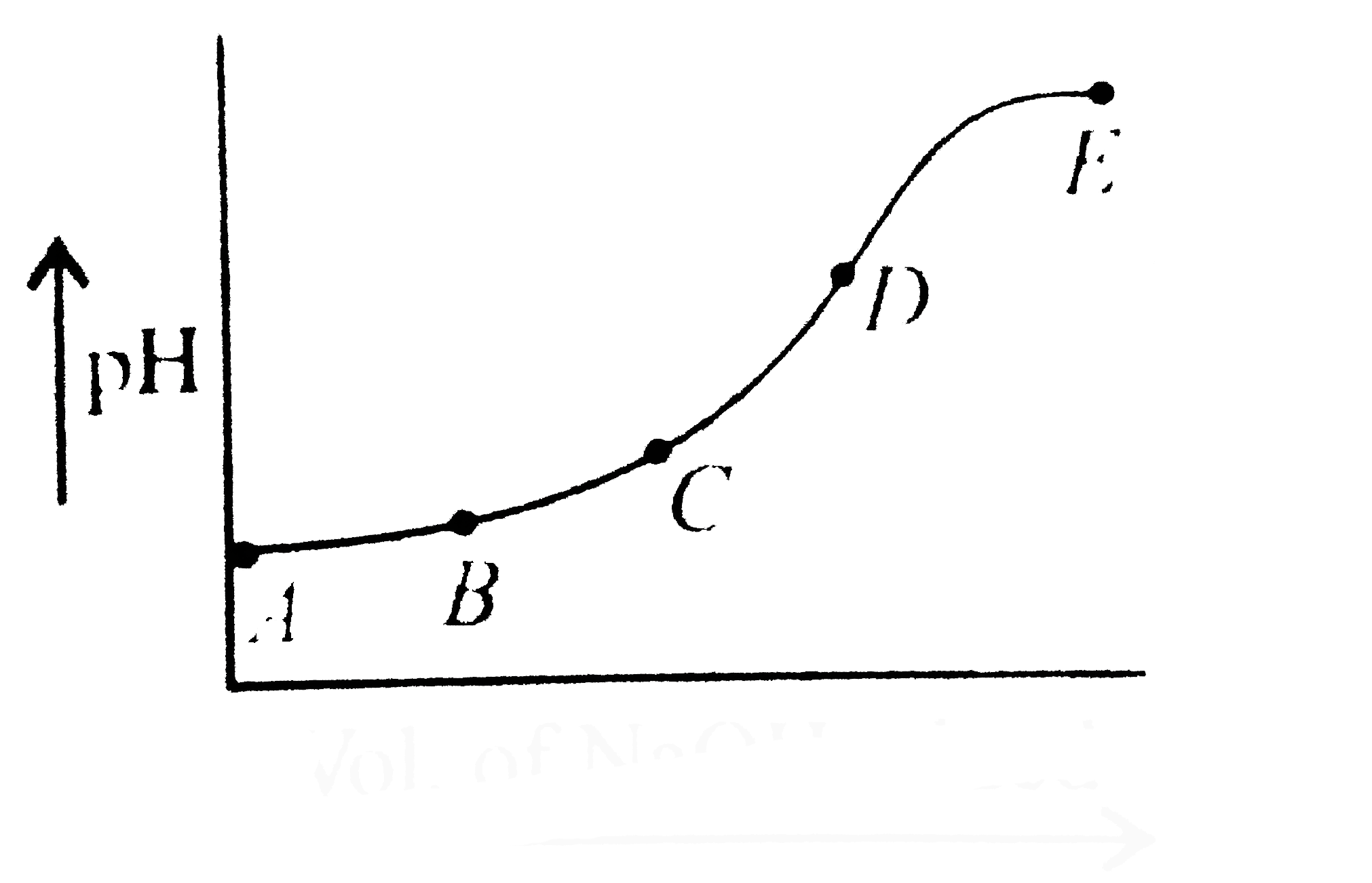The rapid change of pH near the stoichiometric point of an acid-base titration is the basic of indicator detection. pH of the solution is related to the ratio of the concentration of conjugate acid (H∈) and base (In−) forms of the indicator by the expression
log.[In−][HIn]=pKIn−pH
log.[HIn][In−]=pKIn−pH
log.[HIn][In−]=pH−pKIn
log.[In−][HIn]=pH−pKIn
The correct Answer is:D
To derive the expression relating the pH of a solution to the concentrations of the conjugate acid (HIn) and base (In^(-)) forms of an indicator, we follow these steps:
1. Dissociation of the Indicator:
The indicator (HIn) dissociates in solution as follows:
HIn⇌H++In−
2. Equilibrium Constant Expression:
The equilibrium constant (K_in) for this dissociation can be expressed as:
Kin=(H+)(In−)(HIn)
3. Taking Logarithm:
To relate this to pH, we take the logarithm of both sides:
logKin=log((H+)(In−)(HIn))
4. Applying Logarithmic Properties:
Using the properties of logarithms, we can separate the terms:
logKin=log(H+)+log(In−)−log(HIn)
5. Substituting pH:
Since −log(H+)=pH, we can rewrite the equation:
logKin=−pH+log(In−)−log(HIn)
6. Rearranging the Equation:
Rearranging gives us:
pH=log(In−)−log(HIn)+logKin
7. Final Expression:
This can be simplified to:
pH=pKin+log((In−)(HIn))
Conclusion:
Thus, the expression relating the pH of the solution to the ratio of the concentrations of the conjugate acid and base forms of the indicator is:
log((In−)(HIn))=pH−pKin
The indicator (HIn) dissociates in solution as follows:
HIn⇌H++In−
The equilibrium constant (K_in) for this dissociation can be expressed as:
Kin=(H+)(In−)(HIn)
To relate this to pH, we take the logarithm of both sides:
logKin=log((H+)(In−)(HIn))
Using the properties of logarithms, we can separate the terms:
logKin=log(H+)+log(In−)−log(HIn)
Since −log(H+)=pH, we can rewrite the equation:
logKin=−pH+log(In−)−log(HIn)
Rearranging gives us:
pH=log(In−)−log(HIn)+logKin
This can be simplified to:
pH=pKin+log((In−)(HIn))
Thus, the expression relating the pH of the solution to the ratio of the concentrations of the conjugate acid and base forms of the indicator is:
log((In−)(HIn))=pH−pKin
Similar Questions
The best indicator for detection of end point in titration of a weak acid and a strong base is
View SolutionDiscuss the various types of acid-base titrations using indicators.
View SolutionIn a mixture of weak acid and its salt, the ratio of concentration of salt to acid is increased ten fold. The pH of the solution
View SolutionThe best indicator for the detection of the end point in the titration of a weak acid and a strong base is
View SolutionWhat are acid -base indicators and how do they indicate the end point of an acid -base titration?
View SolutionWith respect to the titration of acid and base. Answer the following questions :
Name the indicator used in the above process.
View SolutionConductance measurements and be used to detect the end point of acid-base titrations. Which of the following plots correctly represents the end point of the titration of strong acid and a strong base?
View SolutionIn a mixing of acetic acid and sodium acetate the ratio of concentration of the salts to the acid is increased ten times . Then the pH of the solution
View SolutionWhich indicator is most commonly used for the titration of a strong acid against a strong base?
View SolutionThe following curve shows the change of pH during the course of titration of weak acid HA with a strong base. At which point in the titration curve is the concentration of acid equal to that of its conjugate base.

View Solution
